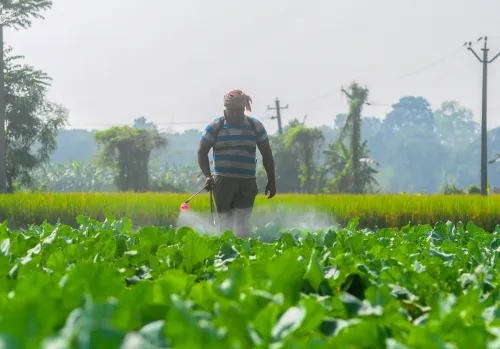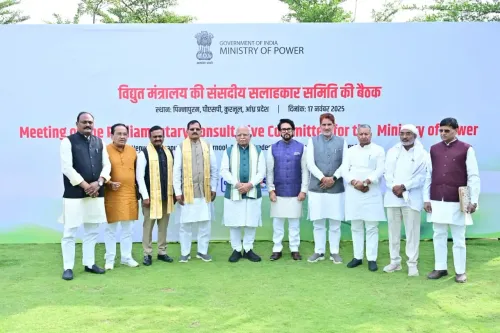Is India’s Labour Force Participation Rate Reaching New Heights in October?

Synopsis
Key Takeaways
- Labour Force Participation Rate reaches a six-month high of 55.4% in October.
- Female participation in the workforce rises to 34.2%.
- Worker Population Ratio shows a consistent increase at 52.5%.
- Unemployment Rate remains steady at 5.2%.
- PLFS provides critical data for understanding labor market trends.
New Delhi, Nov 17 (NationPress) The upward trend in the overall Labour Force Participation Rate (LFPR) for individuals aged 15 years and older, indicating a rise in employment opportunities, has continued for the fourth consecutive month, achieving a 6-month peak of 55.4 percent in October, as per a statement from the Ministry of Statistics released on Monday.
The involvement of women in the labour force has shown consistent growth over the last four months for those aged 15 and above. This ongoing rise in rural women's participation reflects a strengthening of economic inclusion within the nation.
The overall LFPR for females aged 15 years and above climbed to 34.2 percent in October, the highest level since May 2025, driven primarily by increases in rural female LFPR.
Female LFPR has risen from 32 percent in June to 34.2 percent in October.
The overall Worker Population Ratio (WPR), another crucial employment indicator, was noted at 52.5 percent in October, marking a steady rise since June 2025 among individuals aged 15 and older. Additionally, the WPR for females in this age group has also shown consistent improvement for the fourth month running, the report stated.
The Unemployment Rate (UR) for those aged 15 years and above remained unchanged at 5.2 percent in October 2025, the same as in September, according to the ministry.
The Periodic Labour Force Survey (PLFS), conducted by the National Statistics Office, serves as the main source of data regarding participation in activities and employment conditions. The methodology of the PLFS was updated in January 2025 to offer monthly and quarterly estimates of labour force indicators for the country.
Monthly results from the PLFS are published in Monthly Bulletins, which estimate key labour market indicators, such as Labour Force Participation Rate (LFPR), Worker Population Ratio (WPR), and Unemployment Rate (UR) at a national level, following the Current Weekly Status (CWS) approach.









